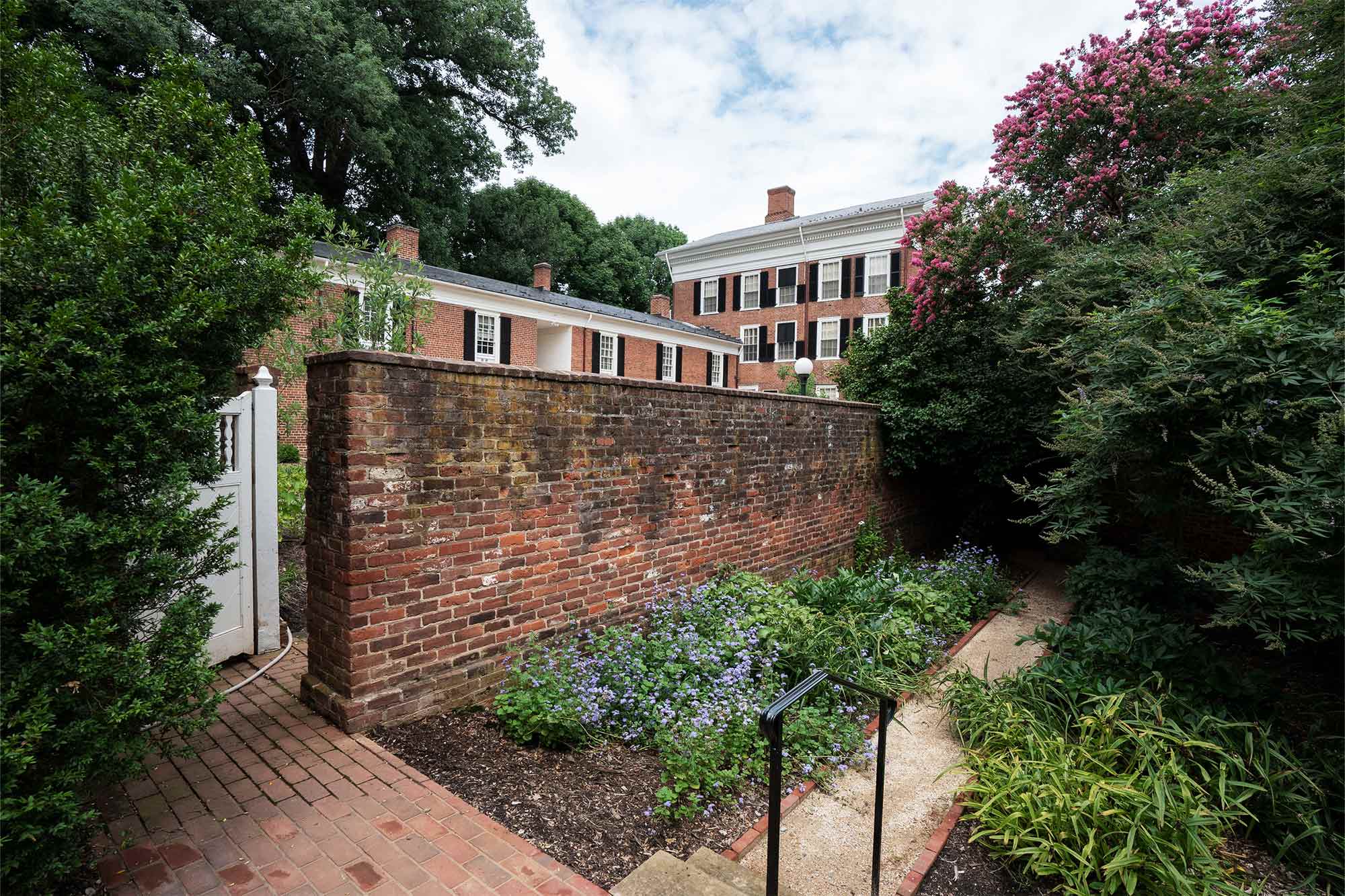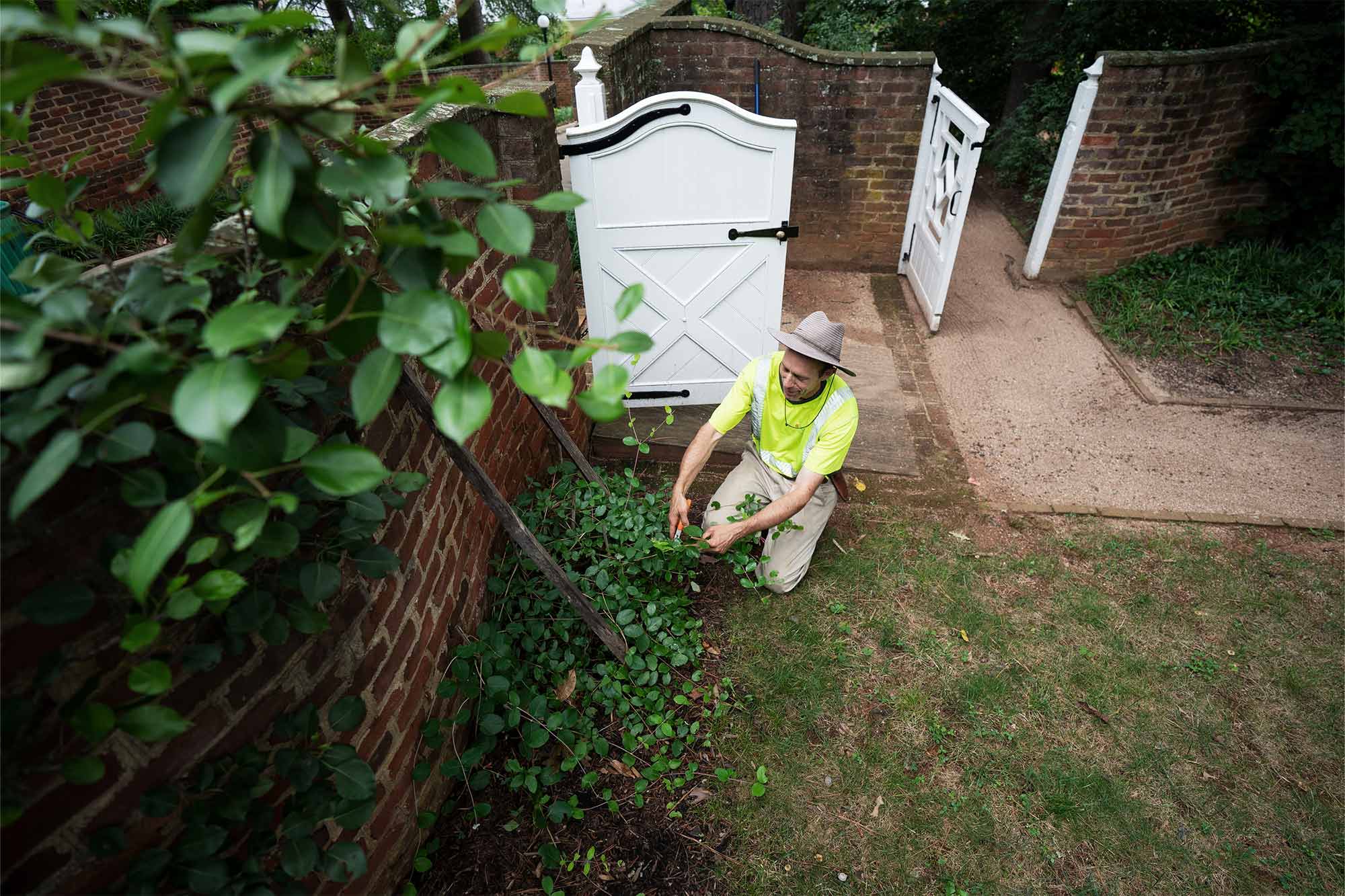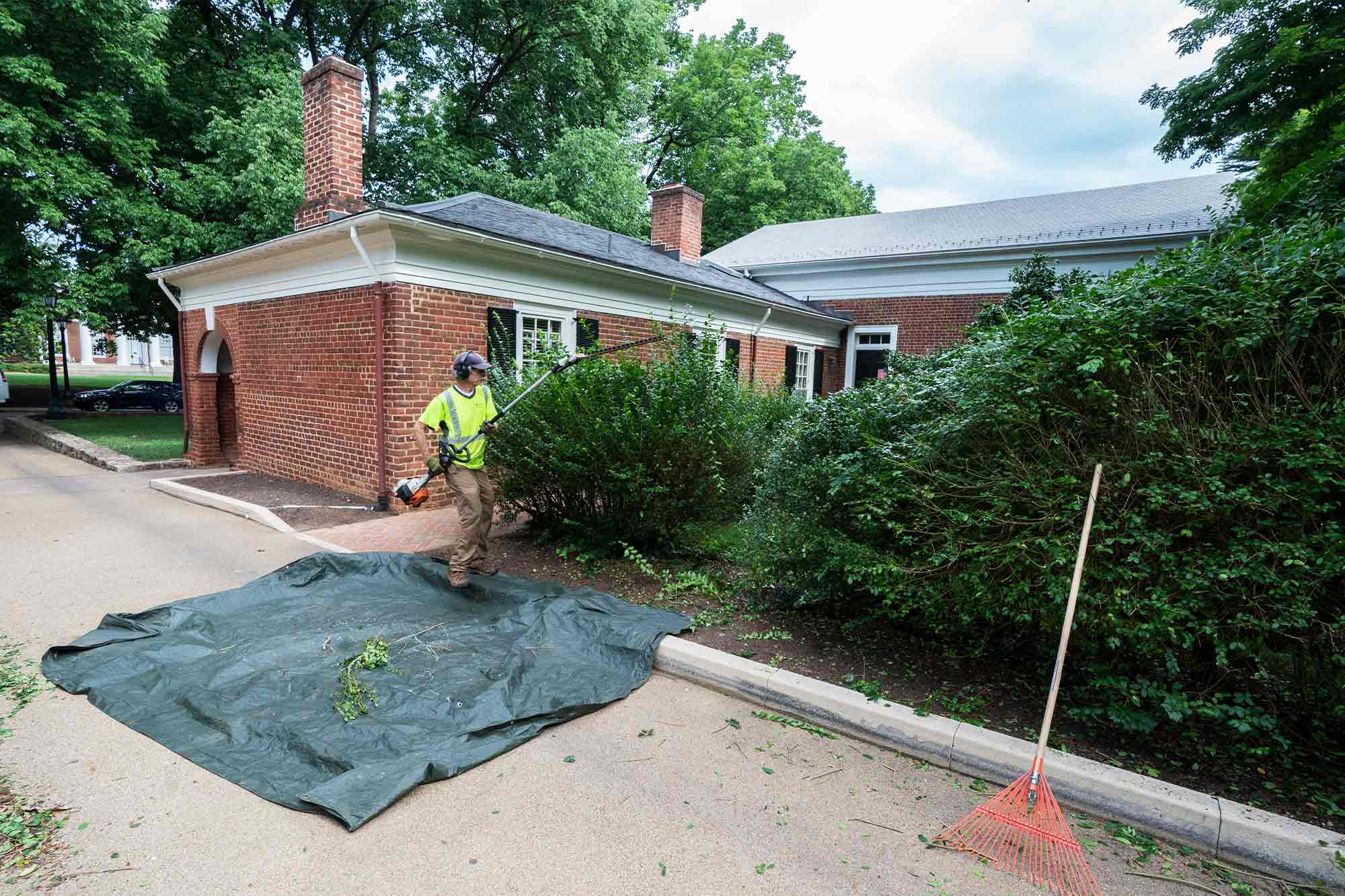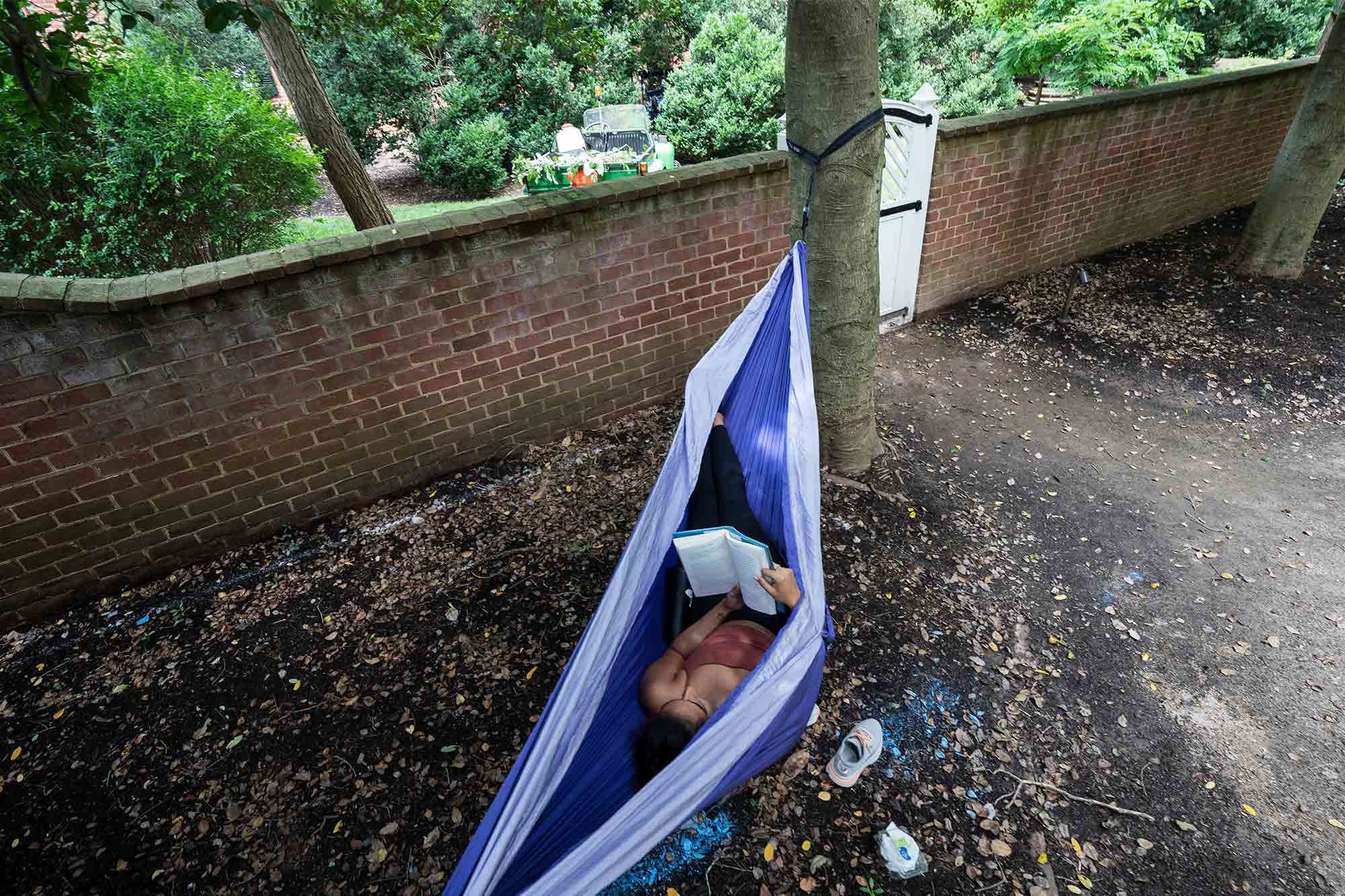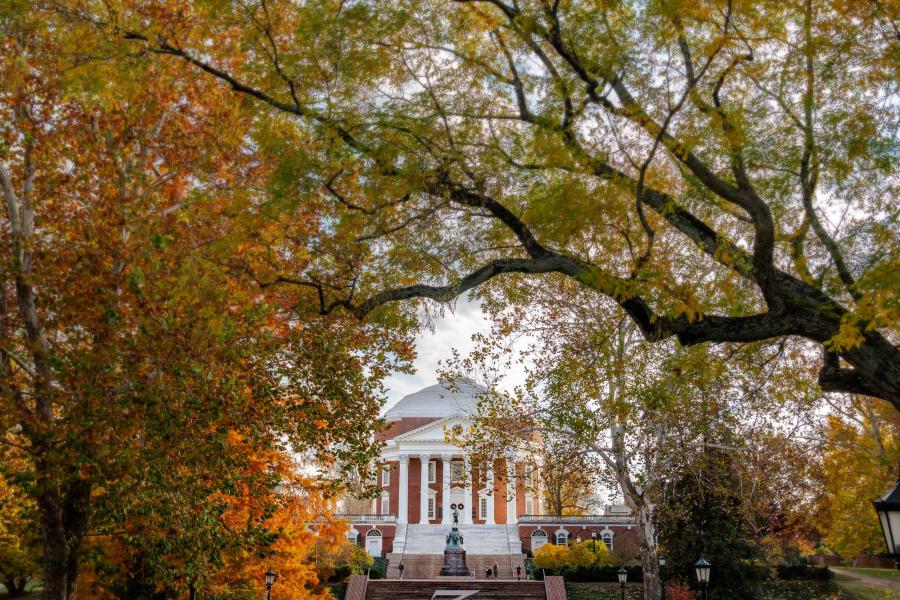At the University of Virginia, time seems to slow in the summer, when many fewer students populate Grounds.
But summer is a busy time in UVA’s Jeffersonian gardens, when warm, wet weather hastens plant growth – including weeds that sprout rapidly and shrubs that encroach upon walkways.
“In some ways you could say that in the few weeks leading up to Garden Week and graduation, in April and May, are busier because there are a lot more expectations of how things look for visitors during those times,” said gardener Roland Von der Muhll, who works on the gardens on the east side of the Lawn. “But the volume and speed of plant growth this time of year can be pretty extraordinary compared to the rest of the year, especially when it is a wet year like this one.”
Von der Muhll and fellow gardener Tim Andrus have their summers consumed by weeding, pruning, collecting debris and raking.
“A lot of shrubs start to grow vigorously in the summer, so they will start to block the pathways,” Andrus said. “When the rains come, we need to keep all the drains cleared out. Even some of the newer ones get clogged up very quickly and debris will land on top of them and build up like sedimentary layers in a geology zone.”
